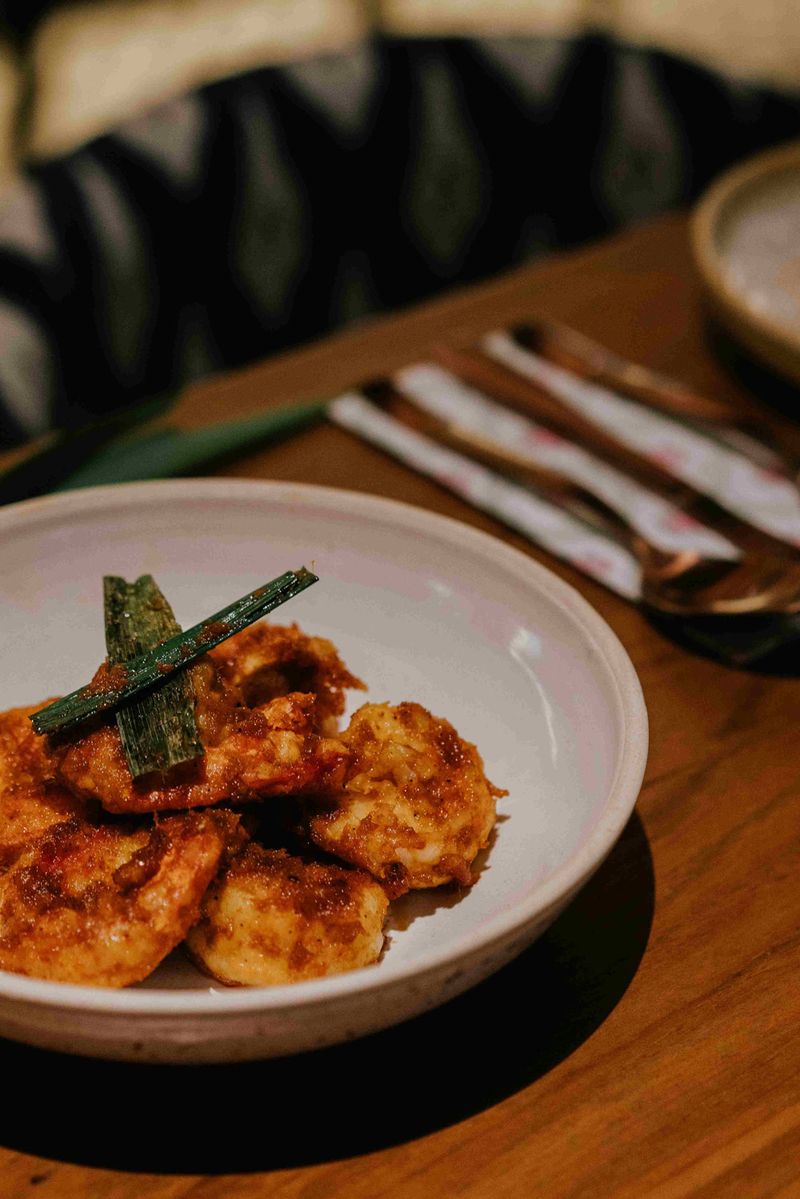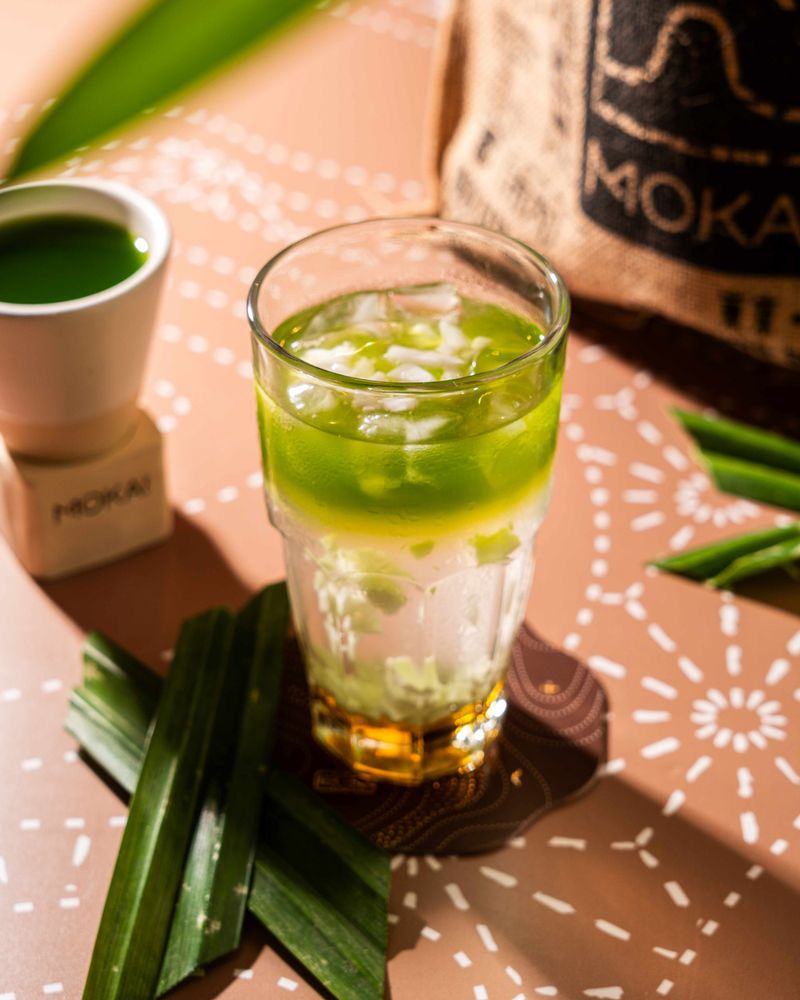Growing up in Karnataka in the South of India, Ravi Shetty often enjoyed the coconut and pandan pulao his mother would often make at home. The head bartender at Bandra Born recalls vividly the aroma and taste of the fragrant rice dish when it was being prepared in the kitchen. The pandan leaves were washed, cut and added to the boiling water to add a subtle grassy flavour to the rice. Inspired by these memories, Shetty channelled his nostalgia into crafting the Danda Green—a refreshing cocktail blending fresh coconut, pandan, and gin—now a beloved favourite at the Bandra-based hotspot.

With their long, spiky green leaves, pandan plants are a common sight in Thai and Southeast Asian cuisine, renowned for their distinctive fragrance and flavour. Known as the ‘Vanilla of the East’ for their subtle fragrant flavour, pandan is also called bai toey hom in Thai, while the Malaysians know it as daun pandan. In parts of South India where it grows in abundance in the wild, as Shetty mentions, it is often used to flavour rice dishes. However, it is in recent times that pandan seems to be having its moment in the sun even at fine-dine restaurants and eateries across the country. Its delicate and aromatic essence enhances a wide array of dishes, from beverages and main courses to desserts.
While some describe the aroma of pandan as herbaceous and sweet-smelling, others have used vanilla, grassy, earthy and nutty to express its flavour notes. Manoj Padmanaban, co-founder of Chennai's Pandan Club—a Peranakan restaurant blending Chinese, Malay, and Indonesian traditions—compares pandan leaves to bay leaves. Just as bay leaves are essential in Indian cuisine for flavouring rice, curries, and meat dishes, pandan leaves play a similar role in Asian cooking. “Typically, when you make a biryani or a curry, the bay leaf goes in the oil first. Not much importance is given to it but it has a flavouring impact and is an unsung hero. The pandan is the bay leaf of Asian cuisine. It has a very unique taste profile,” he says.
At Pandan Club, the leaves are used in various dishes including Rempah Pumpkin, Baby Potato Curry, Rempah Prawn, Black Pepper Lamb Curry and Pandan Ice Cream among others. Their recently-introduced cocktail program includes a drink named Affair, a heady concoction of pandan leaves, scotch, palm jaggery and sea water. “Pandan enhances the earthiness of the scotch,” says Padmanaban, adding that since it is a very subtle flavour, pandan can easily be overpowered by any sharp flavour, such as lemongrass and needs to be used wisely.

At Bandra’s Mokai, the most recent addition to the thriving café scene in the suburb, founder Karreena Bulchandani is on a quest to explore pandan in various ways. The passionate traveller who discovered the aromatic ingredient when she was living in China in her growing up years, could not get the lingering aroma of pandan out of her mind when she decided to open an all-day-dining and café when she moved to Mumbai. At Mokai, they do a refreshing Pandan Coconut Cooler with fresh coconut chunks and honey. “It lets the coconut water taste like coconut water. It lets the pandan taste like pandan. It just adds a subtle sweetness which enhances the taste of the drink,” she says. The floral, nutty taste of the ingredient leaves a beautiful aftertaste when added to the beverage, she believes, adding that they use local farms to source the pandan. When it comes to food, one can try out their Pandan Cream Croissant and in the future, Bulchandani also wants to introduce a Mokai Breakfast Curry – a pandan-flavoured curry in which one can dip mini croissants for a flavourful start to the day.

Renjie Wong, area director, India (Mumbai), South Asia & Middle East & Africa, Singapore Tourism Board (STB) shares that the plant, native to Southeast Asia, adds a grassy, floral perfume to a breadth of culinary applications, both savoury and sweet dishes. “Whether it's the hint of pandan in Hainanese chicken rice or the delicious pandan-coconut-jaggery mix in Malay desserts, this versatile herb elevates any dish that it is added to,” he says.
Taking note of the rising popularity of the ingredient, the STB has worked on a number of collaborations including a limited edition pandan-flavoured ice cream sundae at Naturals Now in Juhu, Mumbai, as well as a pandan-flavoured tonic with Svami Drinks. The former, which made an appearance at the ice cream parlour in November last year, was a delicious combination of pandan with jaggery, a layer of coconut, and a sprinkling of thyme waffle crumbs. Additionally, it was topped with gula melaka, a particularly nutty, smoky Southeast Asian coconut palm jaggery.

Wong and Aneesh Bhasin, co-founder of Svami Drinks travelled to Singapore together to explore different flavours and pandan really stood out for the latter. “I love pandan. We wanted something unique, something very Singapore for a limited-edition tonic and we narrowed down on pandan,” says Bhasin, who introduced the tonic water earlier this year, captioning it ‘Singapore in a bottle’ on their social media account. “There’s also some Gondhoraj lime in it and personally, I prefer it with vodka than gin,” he adds.
Wong believes that their partnership with well-loved brands across India has managed to spark a curiosity and love for this simple yet truly extraordinary flavour. “Modern science backs up what we've known for ages, that pandan has great benefits for the heart, skin, and digestive system, which makes it a beloved ingredient in not only our kitchens but also traditional medicine,” he says.
Indeed, pandan has a lot more uses in air fresheners as well as in essential oils, but that is another story!
Disclaimer: The views expressed in the article reflects the author(s) opinions and do not necessarily represent the views of the publisher and editor.


_1716888748211_thumb_1200.jpeg?w=3840&q=75)
_1716187298187_thumb_300.jpeg)